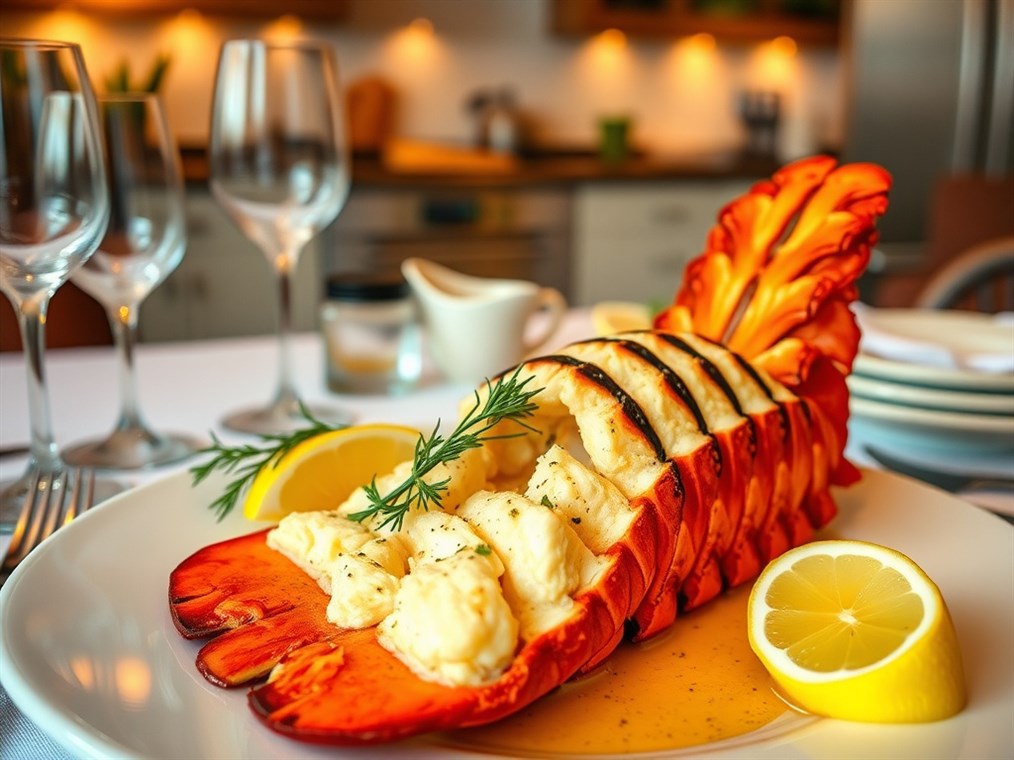Decoding Lobster Tail Perfection: A Home Cook’s Guide
Okay, let’s talk lobster tail. It’s one of those dishes that can seriously impress, but nailing it can feel a little intimidating, right? I get it. But trust me, with a few simple tricks, you can transform those beautiful tails into a restaurant-worthy meal, every single time. The secret? Temperature, temperature, temperature!
Forget dry, rubbery lobster – we’re aiming for succulent, tender perfection. Undercook it, and you’re left with a mushy mess. Overcook it, and well, you might as well be chewing on a tire. So, what’s the magic number?
Here’s the deal: you want that lobster tail to hit an internal temperature between 140°F and 145°F (60°C to 63°C). Think of it as the sweet spot. At this range, the meat turns opaque white, firm enough to hold its shape, but still incredibly juicy. The USDA plays it safe, recommending 145°F (62.8°C) for all seafood, and honestly, it’s a good rule of thumb.
Why is temperature so crucial? It’s all about the science, but let’s keep it simple. Too low, and those pesky bacteria might stick around. Too high, and you squeeze all the moisture out, leaving you with a culinary tragedy.
Think of it like this: temperature dictates texture, safety, and flavor. When you nail the temp, you’re not just cooking; you’re crafting an experience.
So, how do you make sure you hit that perfect zone? Ditch the guesswork and grab a food thermometer. Seriously, it’s the best investment you can make for seafood success.
Here’s the lowdown on checking:
- Your Weapon: An instant-read thermometer is your best friend here.
- The Target: Aim for the thickest part of the tail, but steer clear of the shell. We want meat temperature only!
- Calibration is Key: Make sure your thermometer is accurate. A little test beforehand can save you a lot of heartache.
Now, let’s talk cooking methods. Baking, broiling, grilling, steaming, boiling – the possibilities are endless! But no matter how you choose to cook your lobster tail, that target temperature remains the same: 140°F – 145°F. Of course, cooking times will vary depending on the method and the size of your tails.
Here’s a quick rundown:
- Baking: I like to bake at around 375°F (190°C). Some people add a splash of water to the pan to keep things moist, and honestly, it’s not a bad idea.
- Broiling: Keep a close eye on those tails under the broiler! They can go from perfectly cooked to burnt in a heartbeat.
- Grilling: Shell-side down first is the way to go. That way, you protect the delicate meat from direct heat.
- Steaming: Steaming is super gentle and helps keep the lobster nice and moist.
- Boiling: Classic, simple, but easy to overcook. Watch those tails closely!
Okay, so you’ve got your thermometer, you’ve chosen your cooking method… but what if you don’t have a thermometer handy? Don’t panic! There are a couple of visual cues you can look for:
- Color: The meat should be uniformly opaque white. No translucent bits allowed!
- Firmness: Give it a gentle poke. It should feel firm, but not rock-hard.
Before you even start cooking, here are a few extra tips to keep in mind:
- Thawing: If you’re using frozen tails, thaw them properly! Overnight in the fridge is best.
- Carryover Cooking: Remember that the lobster will continue to cook slightly after you take it off the heat. So, don’t be afraid to pull it a degree or two early.
- The Cardinal Sin: Whatever you do, don’t overcook it! It’s the most common mistake, and it’s a tragedy every time.
So, there you have it. Cooking lobster tail to perfection isn’t rocket science. With a little attention to temperature and these handy tips, you’ll be serving up mouthwatering lobster tails that will impress even the most discerning foodie. Now go forth and conquer those tails!

